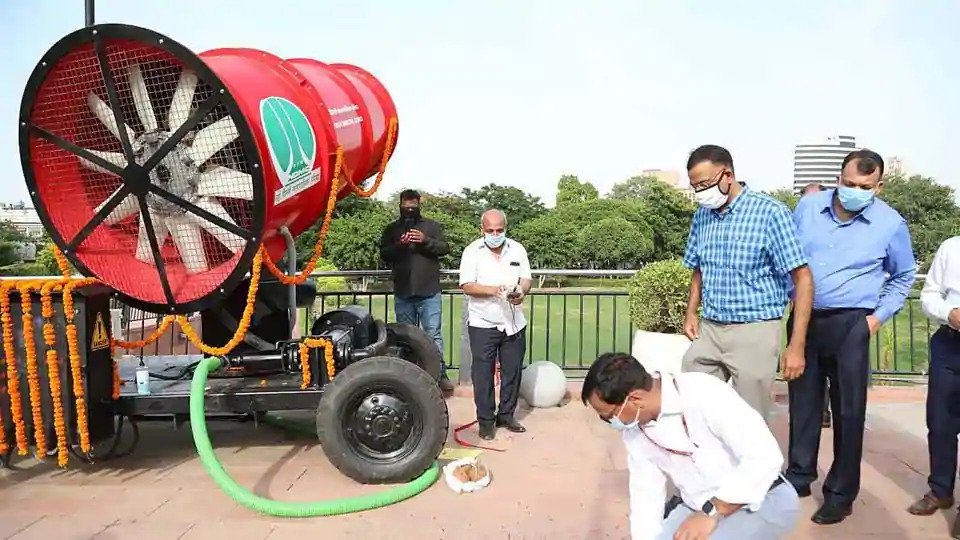
NEW DELHI: The New Delhi Municipal Council (NDMC) set up an ‘anti-smog gun’ on Monday, July 13, in Central Park, Connaught Place, in an effort to reduce the level of air pollution, which was increased after lockdown levels were relieved. Dharmendra, IAS, Chairman, NDMC, inaugurated the machine in the presence of the Amit Singla, Secretary, NDMC. This device is a pilot project to curb the increased pollution levels which witnessed a spike after the COVID-19 lockdown ended. More such devices will be installed if the trial is successful.
According to an NDMC official, this device is intended to minimize air pollution by spraying atomized water into the atmosphere to clear out dust and waste particles from the environment and decrease the levels of PM10 and PM2.5. He added that the anti-smog devices are designed to produce an ultra-fine fog composed of very small water droplets (less than 10 microns) of atomized water. These tiny water droplets will be spread over a sizeable area with the help of a high-speed fan, which can absorb even the smallest dust particles in the air. As a result, pollution and dust particles are removed from the atmosphere and the amount of PM 10 and 2.5 particles is also decreased.
The anti-smog system has a 100 meters long throw distance with a water droplet size ranging from 30 to 50 microns, covering an area of 27,000 to 37,000 square metres. The cost of the machine is Rs 13 lakh and will be controlled by a wired remote-control system.
The NDMC official said that they could place more guns at India Gate, Sarojini Nagar Market, Gole Market, and major intersections such as AIIMS & Dhaula Kuan. He added that they will analyze anti-smog guns’ performance and may employ more machines accordingly at India Gate, Rajpath, and metro or other construction sites. “Soon, in Sarojini Nagar, the National Building Construction Corporation (NBCC) will start massive construction and these machines can help reduce dust pollution levels there,” he said.
According to a report by the Center for Science and Environment (CSE), the pollution level in Delhi-NCR, which was down by at least 79 per cent during the initial lockout period, has recorded a comeback with city reopening in the fourth phase of the lockout at the end of May. Of the six megacities, where PM2.5 levels were studied during this period, Delhi experienced the steepest rise (4-8 times) in comparison to other cities (2-6 times), an analysis by CSE showed.
Experts, however, raised concerns about the effectiveness of the anti-smog gun. Shambhavi Shukla, Programme Officer (air pollution), CSE, said it would not be a long-term solution even though it could minimize or settle the pollutants for some time.

